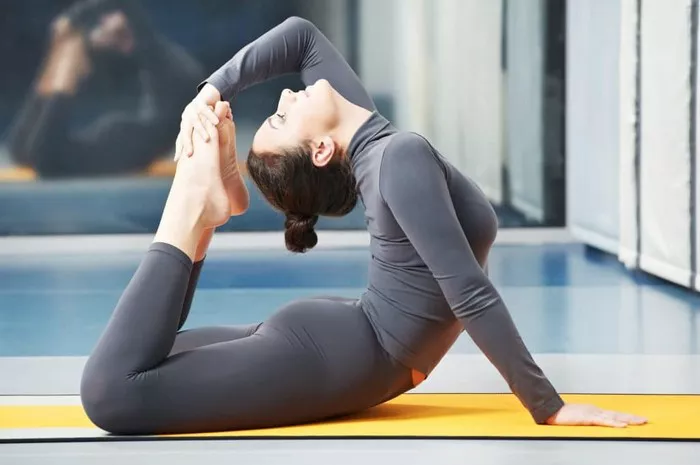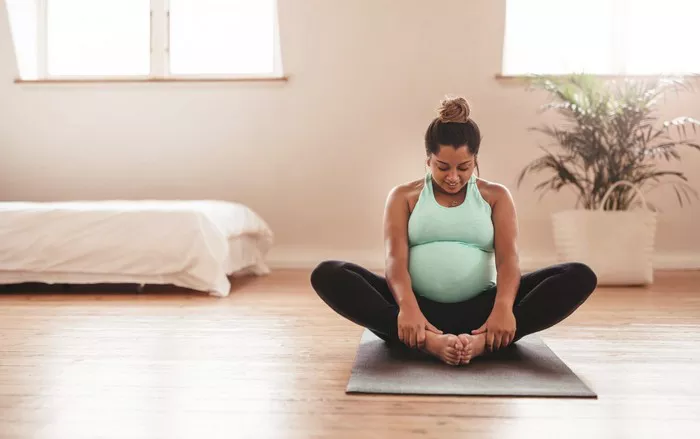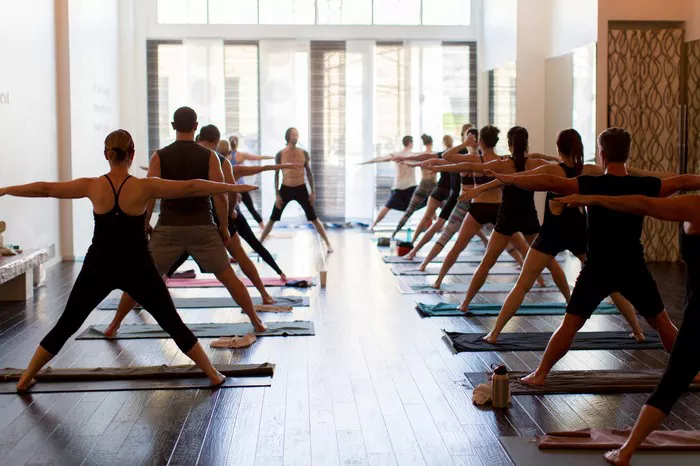The human body is an intricate web of physical and energetic systems. Among these, the chakra system holds significant importance in various spiritual traditions, especially within yoga. The sacral chakra, also known as Svadhisthana, is the second of the seven main chakras and is associated with creativity, sexuality, and emotional health. This article delves into the nuances of the sacral chakra and explores specific yoga poses that can help balance and activate this energy center.
Understanding the Sacral Chakra
The sacral chakra is located in the lower abdomen, approximately two inches below the navel. Its Sanskrit name, Svadhisthana, translates to “one’s own place,” signifying its role in self-identity and personal pleasure. This chakra governs our emotional responses, creative expression, and sexual energy. When balanced, the sacral chakra allows us to experience life with passion, creativity, and emotional resilience.
Characteristics of the Sacral Chakra
- Element: Water
- Color: Orange
- Symbol: Six-petaled lotus
- Gland: Gonads (reproductive organs)
- Mantra: VAM
- Sense: Taste
Signs of Imbalance
An imbalanced sacral chakra can manifest in various ways, both physically and emotionally. Symptoms of an overactive sacral chakra include emotional instability, dependency on others, and overindulgence in sensory pleasures. Conversely, an underactive sacral chakra may result in emotional numbness, a lack of creativity, and difficulties in forming healthy relationships.
Benefits of Balancing the Sacral Chakra
Balancing the sacral chakra can lead to numerous benefits, such as:
- Enhanced creativity and imagination
- Improved emotional stability and resilience
- Healthy sexual expression and relationships
- Increased capacity for joy and pleasure
- Better connection to one’s emotions and intuition
Yoga Poses for the Sacral Chakra
Practicing specific yoga poses can help stimulate and balance the sacral chakra. These poses often focus on opening the hips and enhancing the flow of energy in the lower abdomen. Here are some effective sacral chakra yoga poses:
See Also: 5 Crown Chakra Yoga Poses
1. Bound Angle Pose (Baddha Konasana)
How to Perform:
- Sit on the floor with your legs extended in front of you.
- Bend your knees and bring the soles of your feet together, allowing your knees to fall open to the sides.
- Hold your feet with your hands and gently pull them closer to your pelvis.
- Sit up tall, lengthening your spine.
- Hold the pose for 1-3 minutes, breathing deeply.
Benefits:
- Opens the hips and groin area
- Stimulates the reproductive organs
- Enhances flexibility in the inner thighs
2. Goddess Pose (Utkata Konasana)
How to Perform:
- Stand with your feet wide apart, turning your toes out to a 45-degree angle.
- Bend your knees, lowering your hips into a squat position.
- Ensure your knees are directly above your ankles.
- Bring your hands to your heart center or extend them overhead.
- Hold the pose for 30 seconds to 1 minute, breathing deeply.
Benefits:
- Strengthens the legs and glutes
- Opens the hips and pelvic region
- Boosts stamina and endurance
3. Seated Forward Bend (Paschimottanasana)
How to Perform:
- Sit on the floor with your legs extended straight in front of you.
- Inhale and lengthen your spine.
- Exhale and hinge at your hips to fold forward, reaching for your feet or shins.
- Keep your spine long and avoid rounding your back.
- Hold the pose for 1-3 minutes, breathing deeply.
Benefits:
- Stretches the hamstrings and lower back
- Stimulates the pelvic organs
- Calms the mind and relieves stress
4. Pigeon Pose (Eka Pada Rajakapotasana)
How to Perform:
- Start in a tabletop position on your hands and knees.
- Bring your right knee forward and place it behind your right wrist, with your shin angled slightly under your torso.
- Extend your left leg straight back, lowering your hips towards the floor.
- Keep your hips square to the front of your mat.
- Hold the pose for 1-3 minutes, then switch sides.
Benefits:
- Deeply opens the hips
- Stretches the thighs, groin, and psoas
- Releases stored emotions in the hips
5. Frog Pose (Mandukasana)
How to Perform:
- Begin in a tabletop position on your hands and knees.
- Slowly widen your knees, bringing them as far apart as is comfortable, keeping your hips in line with your knees.
- Lower your forearms to the floor, keeping your palms together or pressing into the mat.
- Hold the pose for 1-3 minutes, breathing deeply.
Benefits:
- Deep hip opener
- Stretches the inner thighs and groin
- Helps release tension and emotional blockages
6. Happy Baby Pose (Ananda Balasana)
How to Perform:
- Lie on your back with your knees bent and feet flat on the floor.
- Bring your knees towards your chest and hold the outsides of your feet with your hands.
- Gently press your feet into your hands, opening your knees wider than your torso.
- Hold the pose for 1-3 minutes, breathing deeply.
Benefits:
- Opens the hips and groin
- Stretches the inner thighs and lower back
- Calms the mind and reduces stress
7. Crescent Lunge Pose (Anjaneyasana)
How to Perform:
- Start in a high plank position.
- Step your right foot forward between your hands, aligning your knee above your ankle.
- Lower your left knee to the floor, keeping your toes tucked or untucked.
- Inhale and lift your torso, raising your arms overhead.
- Hold the pose for 30 seconds to 1 minute, then switch sides.
Benefits:
- Stretches the hips, thighs, and groin
- Strengthens the legs and glutes
- Improves balance and stability
8. Camel Pose (Ustrasana)
How to Perform:
- Kneel on the floor with your knees hip-width apart.
- Place your hands on your lower back with your fingers pointing down.
- Inhale and lift your chest, arching your back and reaching for your heels with your hands.
- Keep your hips pressing forward and your chest lifting.
- Hold the pose for 30 seconds to 1 minute, breathing deeply.
Benefits:
- Stretches the front of the body, including the chest, abdomen, and hip flexors
- Opens the heart and throat chakras
- Enhances emotional release and self-expression
Incorporating Sacral Chakra Yoga into Your Practice
To effectively balance the sacral chakra, it’s important to approach your yoga practice with intention and mindfulness. Here are some tips for incorporating sacral chakra yoga into your routine:
1. Set an Intention
Before beginning your practice, set a clear intention related to balancing and activating your sacral chakra. This could be something like, “I am open to creative energy and emotional healing,” or “I embrace my passions and express my true self.”
2. Use Affirmations
Incorporate affirmations that resonate with the sacral chakra. Examples include:
- “I am creative and inspired.”
- “I honor my body and my emotions.”
- “I am open to joy and pleasure.”
Repeat these affirmations silently or aloud during your practice to reinforce positive energy.
3. Visualize the Color Orange
Since the sacral chakra is associated with the color orange, visualize a warm, orange light radiating from your lower abdomen as you move through your poses. Imagine this light growing brighter and more vibrant with each breath.
4. Incorporate Fluid Movements
As the sacral chakra is connected to the element of water, incorporate fluid and flowing movements into your practice. This can include gentle hip circles, flowing from one pose to another with grace, or incorporating dance-like movements.
5. Practice Mindful Breathing
Focus on deep, mindful breathing throughout your practice. Breathe into your lower abdomen, feeling the breath energize and activate your sacral chakra. Consider using pranayama techniques such as Nadi Shodhana (alternate nostril breathing) or Kapalabhati (skull shining breath) to enhance the flow of energy.
6. Engage in Creative Activities
In addition to your yoga practice, engage in activities that stimulate your creativity and bring you joy. This could include painting, writing, dancing, or any other form of creative expression. Allow yourself to explore and play without judgment.
7. Maintain a Balanced Lifestyle
To support the health of your sacral chakra, maintain a balanced lifestyle that includes healthy nutrition, regular exercise, and sufficient rest. Stay hydrated and incorporate foods that resonate with the sacral chakra, such as oranges, carrots, and sweet potatoes.
Conclusion
Balancing the sacral chakra through yoga can lead to profound benefits in creativity, emotional health, and overall well-being. By incorporating specific poses that open the hips and stimulate the lower abdomen, you can activate this vital energy center and experience a deeper connection to your passions and emotions. Remember to approach your practice with mindfulness, set clear intentions, and engage in creative activities that nourish your soul. Through consistent practice, you can unlock the full potential of your sacral chakra and embrace a life filled with joy, pleasure, and emotional balance.
























